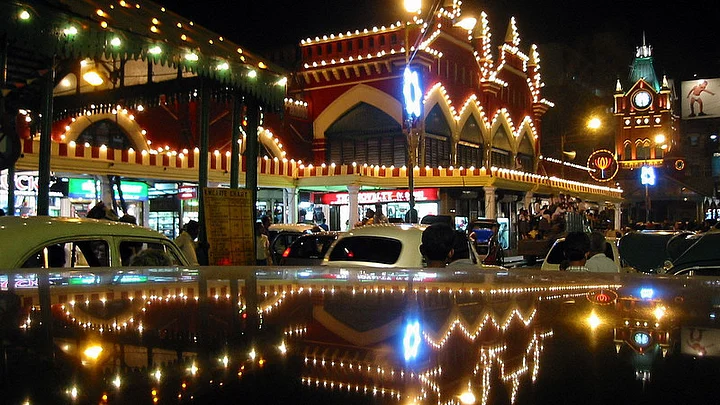On Monday, 18 May, a fire broke out at the fish market behind Calcutta’s iconic New Market. Going by the record of Calcutta’s conflagrations, it was no big deal: there were no casualties and the heritage structure was largely undamaged.
Yet it was the top story on Bengali news channels through the day. A septuagenarian aunt called me from Calcutta to enquire, anxiously, about the details. So I asked myself: why all the anxiety and TV coverage over a relatively minor accident?
The Bhadralok’s Market
Because despite the proliferation of air-conditioned, glass-fronted malls and arcades in Calcutta, New Market still exudes the charm and gentility of a bygone time, values cherished by what remains of the Bengali bhadralok.
My maternal grandfather would order his pinstripes from the nearby J S Mohammedally and go for a stroll afterwards to pick up pastries and croissants — and perhaps his undergarments too — from New Market. My mother and aunts, all in their 70s now, would go from south Calcutta to Lindsay Street where New Market is located, to buy sarees from Dayaram, which opened its shutters in 1908.
Birth of the White Bazaar
It was not always thus. From the early 1800s, when Calcutta started becoming the ‘second’ city of Empire, after London, the British population of the city began spilling out of the vast, manicured confines of Fort William.
The first outer settlements were around Dalhousie Square. While the sahibs went about running the Empire, memsahibs grew tired of ordering khansamas around their estates. So, they did what most privileged ladies did then: took their horse-drawn carriages and sowars and went shopping.
By the late 1860s, memsahibs grew tired of mingling with natives in the bustling fabric and fish markets around Dalhousie. They pestered their husbands to build them an exclusive, roofed market to shop. The gentlemen gallantly obliged.
The old Fenwick bazaar was razed and in its place, the New Market was thrown open in 1874. It had every imaginable object — from champagne flutes to Persian carpets — in its stores. It also had a notice at the main gate that announced “Dogs and Natives Not Allowed.”
Exploits of the Empire
Richard Bayne, an East India Company architect who designed it, was paid Rs 1,000 for his efforts. After 145 years, it stands at a whooping Rs 100 crore. The market was renamed after Sir Stuart Hogg, the corporation boss who’d ensured things went through smoothly.
The duality of Empire persisted. Though natives weren’t allowed to shop in Hogg Market, they could be porters or merchants. Some of the oldest shops there are A Bose and Coondoo florists, both established in the 19th century.
Instead of multiplexes, Hogg Market was ringed by film theatres: New Empire, Lighthouse, Minerva and Globe. Most, sadly, are now defunct.
The notice at the gate was amended soon before Independence, but even today, dogs are not allowed. And some of the extraordinary mix of Imperial globalised entrepreneurship it housed, still survives.
The Call of New Market
Every time I’m in Calcutta, I make a beeline for Nahoum’s. Established in 1902, it is Calcutta’s oldest Jewish bakery, known for their macaroons and vanilla fudge. Most of the family, sadly, migrated to Israel and the old-timers are dying out.
In February, I wanted to surprise my wife with a gift and made a beeline for Chamba Lama, a Tibetan jewellery store in the heart of the market. Chetenyangjomg Sherpa, the ageless lady who sits behind the counter, escaped the Chinese annexation of Tibet as a young girl with her family, in the mid-1940s.
Coming down from Darjeeling to Calcutta to trade Tibetan trinkets, she soon found a ready market and sometime later she set up Chamba Lama. She says most customers now prefer silverware.
But what caught my eye, and sucked out a lot of money from my card, was a large, and rare, chunk of Tibetan bloodstone — green, flecked with red. The Greeks called it heliotrope, believing it could turn the sun red when immersed in water. Asians believe it stanches bleeding and should be worn in battle.
I simply found it beautiful and somehow significant. Just like the place I bought it from.
